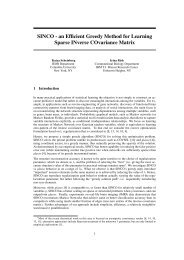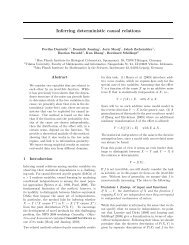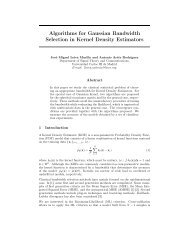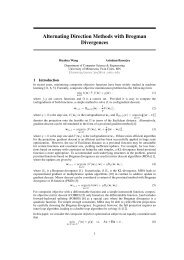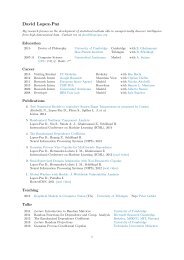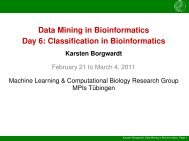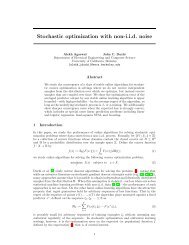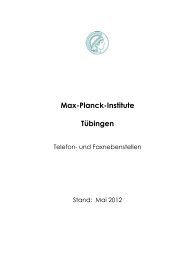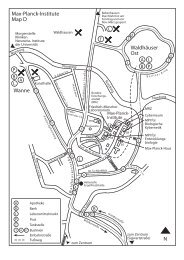benchmarking blind deconvolution with a real-world database
benchmarking blind deconvolution with a real-world database
benchmarking blind deconvolution with a real-world database
Create successful ePaper yourself
Turn your PDF publications into a flip-book with our unique Google optimized e-Paper software.
Recording and playback of camera shake: <strong>benchmarking</strong> <strong>blind</strong> <strong>deconvolution</strong> 96 Benchmark dataset for <strong>real</strong>-<strong>world</strong> camera shakes6.1 Recording images <strong>with</strong> played back camera shakeAs described in Section 4 the image blurs created by the Stewart platform aregood approximations to <strong>real</strong> image blurs. So we create a benchmark dataset ofimages blurred by camera shake by playing back human camera shakes on thehexapod for different images, see Figure 7.We randomly selected two blur trajectories of each of the six subjects applyingthem to four images (Figure 7) resulting in 48 blurry images. Some localblur kernels turned out rather large. We decided to leave those blur kernels inthe benchmark, as they reflect natural camera shake, probably caused by holdingthe camera too relaxed and not paying attention to hold it still, as couldhappen in <strong>real</strong> imaging situations. Even though such images are often erased,it is interesting whether current or future deblurring algorithms can cope <strong>with</strong>such large blur kernel sizes.Fig. 7. The four original images used in the benchmark.As discussed in Section 5.1 some of the blurs are approximately uniformand some are not. Eyeballing the generated PSFs (included in the supplementarymaterial), the blur kernels numbered 1,3,4,5,8,9,11 (see table 1) tend tobe approximately uniform, while blur kernels 2,6,7,10,12 appear non-uniform, inaccordance <strong>with</strong> the NU criterion. Kernels 8 and 11, although having a high NUvalue still visually appear to be uniform. The non-uniformness detected by theNU value is not clearly visible due to the large size of the kernels.For recording the image <strong>database</strong>, the Steward platform was placed inside alight-tight box. The SLR camera was set to ISO 100, aperture f/9.0, exposuretime 1sec, taking images in the Canon raw format SRAW2. A Canon EF 50mmf/1.4 lens was used. The illumination inside the box was adjusted to the cameraparameters and kept constant for all images taken. The true sharp image wasmounted as a poster at a distance of 62cm to the camera. The complete setupis shown in Figure 1.The recorded SRAW2 images (16bit) were processed by DCRAW 2 , generating8bit images <strong>with</strong>out correcting gamma. From the center of the image, a2 DCRAW was called <strong>with</strong> parameters -W -g 1 1 -r 1.802933 1.0 2.050412 1.0 -b 4)



